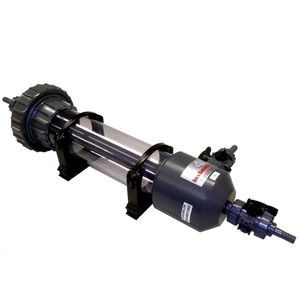
- Electricity - Electronics
- Cable, Connector, Enclosure
- Connection system
- -4H- JENA engineering GmbH
Connection system
Add to favorites
Compare this product
Description
Underwater nodes provide the necessary infrastructure in terms of e.g. electrical power and data connections to continuously operate complex sensor systems having high power consumption on the seafloor.
A stable underwater node technology for shallow water installation (< 300 m) has been developed in the frame of COSYNA (Coastal Observing System for Northern and Artic Seas).
The COSYNA underwater node can be installed with a cable connection to shore up to 30 km offshore for a yearround operation. Thus, it provides the opportunity for a continuous observation of processes in the oceans and coastal areas.
Since 2014 two COSYNA underwater systems are in operation: one is offshore the German island Helgoland, the second one is installed in the Arctic at 79°N offshore Spitsbergen (Svalbard).
Advantages:
⦁ Long-term underwater operation for various applications
⦁ Possibility for different interfaces
⦁ Power supply from shore or for small to medium outputs by battery
⦁ Smart safety concept
⦁ Control and supervision of all relevant measures (voltage, currents, operating temperature, leakage)
⦁ flexible customized and modular setup of complex measurement systems
⦁ Secure access from all over the world
⦁ Each single sensor can be checked and adjusted separately by remote
⦁ Broadband communication of single devices with 100 Mbit/s
⦁ Internal time-server for synchronisation
⦁ Web-based management
⦁ Strict separation of single user access to their corresponding sensors
Catalogs
No catalogs are available for this product.
See all of -4H- JENA engineering GmbH‘s catalogsOther -4H- JENA engineering GmbH products
Marine Technologies
Related Searches
*Prices are pre-tax. They exclude delivery charges and customs duties and do not include additional charges for installation or activation options. Prices are indicative only and may vary by country, with changes to the cost of raw materials and exchange rates.






